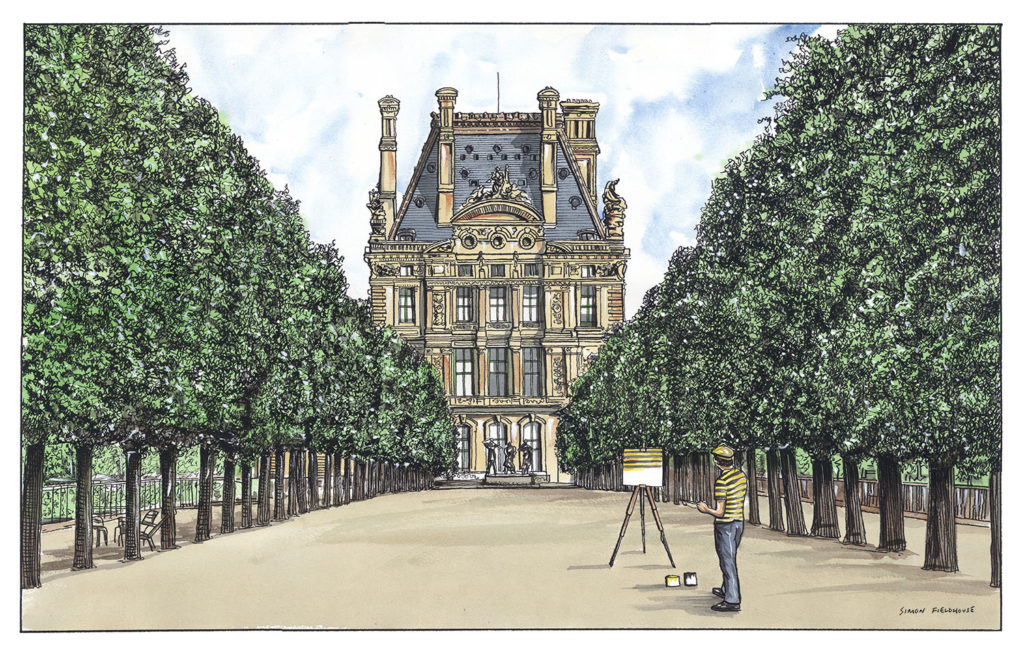
Tuileries Gardens - Louvre - Paris
Tuileries Gardens - Louvre - Paris. The Tuileries Garden is a public garden located between the Louvre Museum and the Place de la Concorde in the 1st arrondissement of Paris. Created by Catherine de Medici as the garden of the Tuileries Palace in 1564, it was eventually opened to the public in 1667, and became a public park after the French Revolution. In the 19th and 20th century, it was the place where Parisians celebrated, met, promenaded, and relaxed.
At the end of the 19th and beginning of the 20th century, the Tuilieries garden was filled with entertainments for the public; acrobats, puppet theatres, lemonade stands, small boats on the basins, donkey rides, and stands selling toys. At the 1900 Summer Olympics, the Gardens hosted the fencing events.[14] The peace in the garden was interrupted by the First World War in 1914; the statues were surrounded by sandbags, and in 1918 two German long-range artillery shells landed in the garden.
In the years between the wars, the Jeu de paume was turned into a gallery, and its western part was used to display the series Water Lilies by Claude Monet. The Orangerie became an art gallery for contemporary western art.
During World War II, the Jeu de paume was used by the Germans as a warehouse for art they had stolen or confiscated.
The liberation of Paris in 1944 saw considerable fighting in the garden. Monet's paintings Water Lilies were seriously damaged during the battle.[15]
Until the 1960s, almost all the sculpture in the garden dated to the 18th or 19th century. In 1964-65, André Malraux, the Minister of Culture for President Charles de Gaulle, removed the 19th-century statues which surrounded the Place du Carrousel and replaced them with contemporary sculptures by Aristide Maillol.